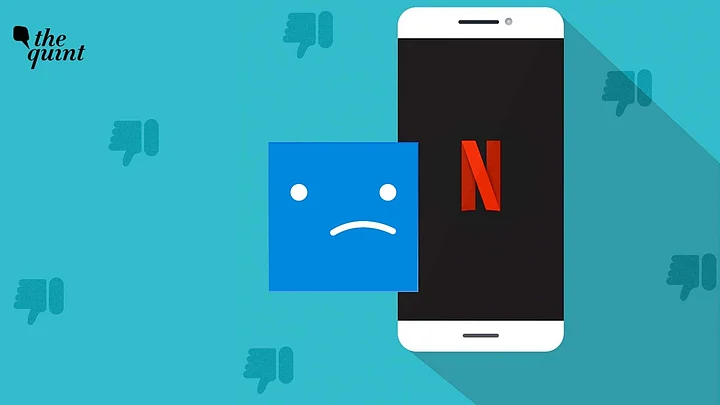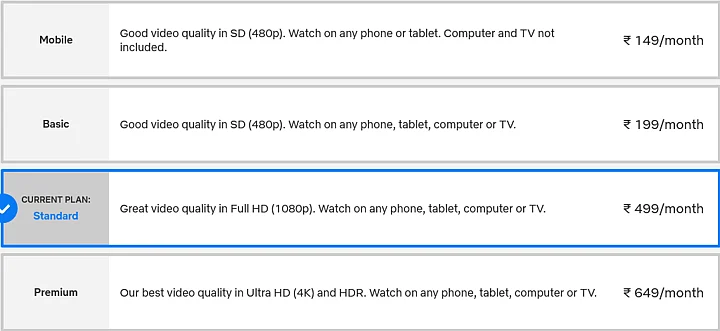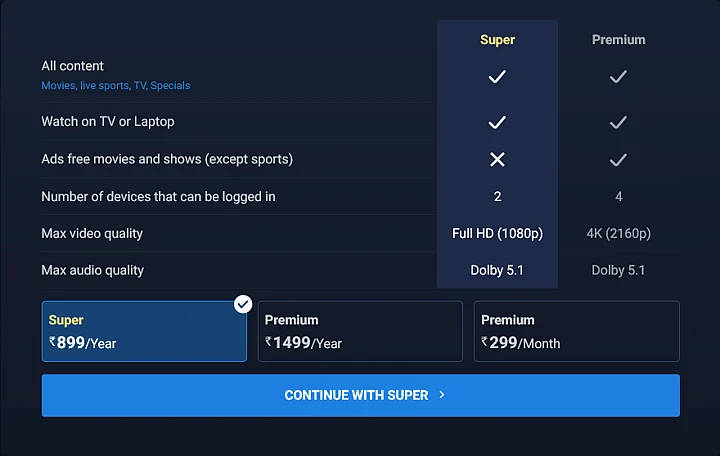Between 19 and 20 April, Netflix lost nearly 40 percent of its market value, amounting to almost $60 billion. This was a reaction to the revelation that the world's largest streaming platform lost subscribers for the first time in a decade.
In the first quarter of 2022, Netflix lost 2 lakh paid memberships globally. In the second quarter it expects to shed 2 million more. Its revenue growth is also dwindling steadily.
The market reacted poorly to the outlook. Billionaire Bill Ackman, for instance, sold his entire stake in Netflix at a loss of about $400 million, just months after acquiring a position worth $1.1 billion, Financial Times reported.
But the news isn't all that surprising. Netflix's subscriber growth has been diminishing for a while. It added just 18.2 million worldwide subscribers in 2021, compared to 36 million in 2020.
The company recently announced some changes to cash in on those who currently access the service, and is shifting gears to get new users on board – an ad-supported tier seems to be on the cards.
Here's a breakdown of what's going on with Netflix.
Putting It in Context
This is not the first time that the market, ever hungry for continuous growth, has reacted to such an announcement with alarm.
Meta's shares plunged about 26 percent in February, erasing $250 billion from the company's market value, after Facebook saw global daily active users decline for the first time in the 18-year history of the company.
Netflix, it is worth noting, remains the biggest player in a highly competitive segment, despite having high prices. It currently has about 222 million paying subscribers.
While its subscriber base is stagnating and revenue is growing slower than expected, its profits remain fairly strong.
Netflix regularly churns out some of the most popular titles, and its television viewing share in the United States (US) – its most important market – has also been steadily growing, according to Nielsen.
Netflix, like Apple, has been in the habit of rarely acknowledging its competition. However, for the past few months, the company appears to be taking stock and experimenting with a slew of measures to push growth.
“It sounds like they’re in rebuilding mode," Jefferies analyst Andrew Uerkwitz told Financial Times.
What's Pulling the Numbers Down?
Netflix, in a letter to shareholders, put forward four "interconnected" reasons why its growth had stagnated:
The pace of growth of the service is partly dependent on factors it doesn't directly control, like the uptake of internet-connected TVs, the adoption of on-demand entertainment, and data costs.
In addition to its 222 million paying households, Netflix estimates that its service is being illegitimately shared with over 100 million additional households, including over 30 million in the US and Canada alone.
Over the last three years, traditional entertainment companies have realised that streaming is the future and have launched their own streaming platforms. This includes Disney, Warner Bros Discovery, and Paramount.
Sluggish economic growth, increasing inflation, geopolitical events such as Russia’s invasion of Ukraine, and some "continued disruption from COVID" are likely having an impact on growth.
Netflix saw exceptional growth due to the coronavirus pandemic which forced a significant chunk of the population to stay indoors with not much to do. The gradual waning of the pandemic and the lifting of stay-at-home orders have likely contributed to the stagnation.
However, the company believes that most of its slow growth in 2021 was not due to the waning of COVID-19 and that the pandemic had "clouded the picture."
Pricing is another point of contention. Netflix was already one of the more expensive streaming services, in terms of what it offered. Then, in March 2022, it announced a price hike for the US and Europe, irking subscribers.
Several social media users have cited the price hike, coupled with limited simultaneous streams and video quality on the lower-tier subscriptions, as their reason for leaving.
It has happened before. A decade ago, after it first unveiled plans to begin charging for its streaming service (which had so far been bundled for free with its traditional DVD-by-mail service), Netflix lost 800,000 subscribers.
Experiments in India
Netflix is doing pretty well in the Asia Pacific, which was the only region in the last quarter that registered a growth in paid memberships. However, the platform continues to struggle with the Indian market.
"The great news is in every single other major market, we've got the flywheel spinning. The thing that frustrates us is why haven't we been as successful in India," Netflix co-CEO Reed Hastings said in January.
Going by London-based research firm Omdia's data, Disney+ Hotstar leads the subscription market with a 41 percent share. Eros Now and Amazon Prime Video follow with a 24 percent and a 9 percent share respectively.
Netflix sits at a meagre 7 percent.
In terms of revenue, however, Netflix has about 36 percent market share, followed by Disney+ Hotstar (25 percent), and Amazon Prime with (22 percent), a Moneycontrol report mentioned.
To gain market share, Netflix has been forced to slash prices in India.
Even though its cheapest plan is Rs 149 per month, it only offers access to one user account, on only one mobile or tablet at 480p resolution. You don't get access to 4K even with Rs 499 a month.
In terms of value for money, Netflix's other plans do not match up to the competitors' plans which often offer better screen resolution, simultaneous streaming on multiple devices, and additional services.
Competitors, some of which rely on ad revenue, also have a lot of India-focused content and programming, which Netflix was slower to adopt.
"What's unique about India is cable is about $3 per month per household. So radically different pricing than the rest of the world, which does impact consumer expectations," Hastings said.
"I think we're quite bullish that India isn't fundamentally different in some way that we can't figure out how to tailor our service offering to be attractive to Indian consumers who love entertainment," he added.
What Netflix Will Do Next
To boost growth, Netflix said that it will double down on improving the quality of its programming and recommendations as well as focusing on content localisation, but the biggest changes will be monetising freeloaders and exploring ad revenue.
Over 100 million additional households borrow passwords from paying households. While Netflix let this slide for about five years, it is now planning to generate revenue from the unauthorised viewers.
It is testing two options to let freeloaders become legitimate customers:
1. Netflix will let you add two extra 'sub accounts' at a reduced price.
2. It will let freeloaders transfer to a new account or sub-account while keeping viewing history, lists, and personalised recommendations.
"These are over 100 million households that already are choosing to view Netflix. They love the service. We just got to get paid at some degree for them."Netflix co-CEO Reed Hastings
Netflix, which has been traditionally against the idea of advertisements in its service, is warming up to the idea.
"Those who have followed Netflix know that I've been against the complexity of advertising and a big fan of the simplicity of subscription," said Hastings.
"But as much I'm a fan of that, I'm a bigger fan of consumer choice. And allowing consumers who would like to have a lower price and are advertising-tolerant get what they want makes a lot of sense."Netflix co-CEO Reed Hastings
“It’s something we’re looking at now and will roll out over next year or two... It’s working for Hulu, and Disney is doing it. Those companies have figured it out," he added.
(With inputs from Moneycontrol and Financial Times.)



